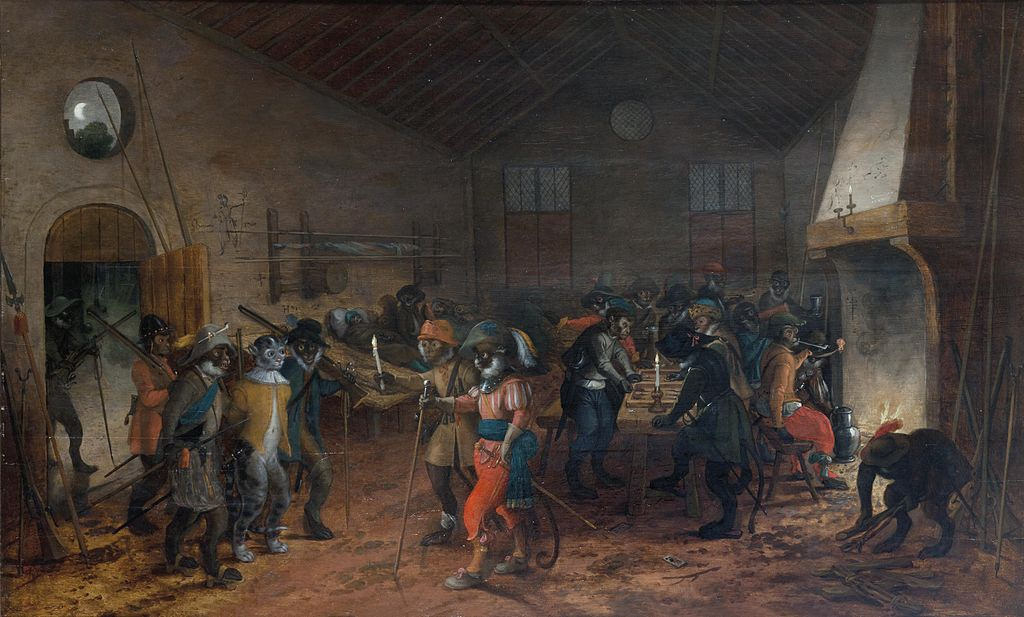The Singerie for The Black Hack

The art genre called Singerie (“monkey trick” in French) shows monkeys aping human dress and behavior. Often these paintings satirized human fashions, trends, and foibles, as in “Allegory of Tulip Mania” from the first half of the seventeenth century by Jan Brueghel the Younger. Click here to see this painting.
In The Black Hack, a Singerie is a racial character class for those of us who might enjoy playing a talking monkey adventurer. Agile, imitative, and clever, a Singerie ought to be a welcome addition to any adventuring party.
Singerie
Starting HP: d6 + 4
HP Per Level/Resting: 1d6
Weapons & Armor: Any One-Handed Weapon or Thrown Weapon, and Gambeson, Leather, and Small Shields
Attack Damage: 1d6 Thrown Weapons only / 1d4 All Others
Special Features
A Singerie rolls with Advantage when performing delicate tasks, climbing, spotting details, moving silently, and performing acrobatics.
If a Singerie takes a Moment to a Minute and observes someone (or something) perform a task, the Singerie may attempt that task the next within the next Minute, rolling with Advantage so long as the task requires a DEX, INT, or CHA save. Esoteric tasks, such as spellcasting, may be rolled, but not with Advantage. Especially unusual or difficult tasks may be impossible or may be attempted with Disadvantage, at the DM’s discretion. After each imitative act, a Singerie rolls his Monkey See Monkey Do Usage die, which starts at d4.
A Singerie makes Ranged Attacks with Thrown Weapons at Nearby targets with Advantage.
Leveling Up
Roll to see if attributes increase. Roll with Disadvantage for STR. Roll twice for DEX and INT.
Every odd numbered level, step up the Monkey See Monkey Do die.
Nota Bene: The painting at the top of this post is Sebastian Vrancx’s “Singerie with monkey soldiers taking a cat prisoner, backgammon playing monkeys to the right”, from the early 17th century. Your can read a bit more about Singerie paintings over at the Public Domain Review.
